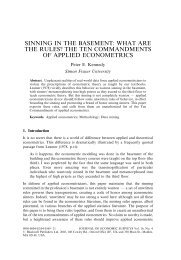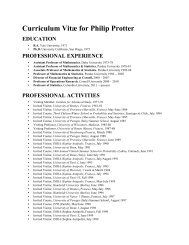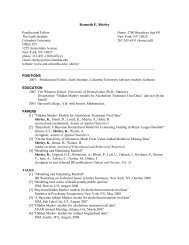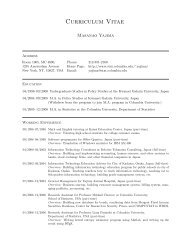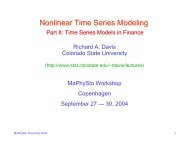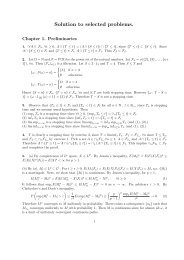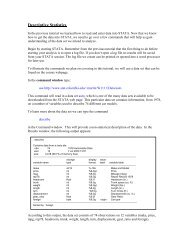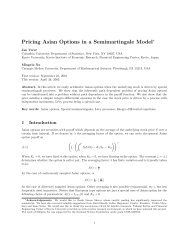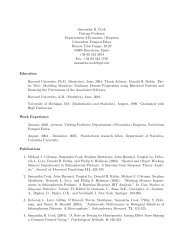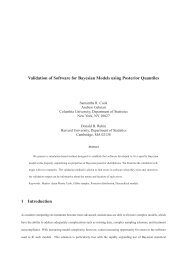The Self-Controlled Case Series - Department of Statistics ...
The Self-Controlled Case Series - Department of Statistics ...
The Self-Controlled Case Series - Department of Statistics ...
You also want an ePaper? Increase the reach of your titles
YUMPU automatically turns print PDFs into web optimized ePapers that Google loves.
<strong>Self</strong>-<strong>Controlled</strong> <strong>Case</strong> <strong>Series</strong> 7<br />
3.2. Multiple drug exposures and drug interactions<br />
So far we have discussed the scenario where there is one AE and one drug<br />
<strong>of</strong> interest. However patients generally take multiple drugs throughout the<br />
course <strong>of</strong> their observation period. Additionally, patients may take many<br />
different drugs at the same time point, which leads to a potential for drug<br />
interaction effects. In order to account for the presence <strong>of</strong> multiple drugs and<br />
interactions, the intensity expression for the SCCS model can be extended in<br />
a natural way.<br />
Suppose that there are p different drugs <strong>of</strong> interest, each with a corresponding<br />
exposure indicator x idj = 1 if exposed to drug j on day (i,d); 0<br />
otherwise. Let e βj be the multiplicative effect <strong>of</strong> drug j on the event rate.<br />
A multiplicative model describes the intensity for patient i on day d:<br />
λ id = e φi+β′ x id<br />
= e φi + β1 x id1 + ··· + β p x idp<br />
where x id = (x id1 , . . . , x idp ) ′ and β = (β 1 , . . . , β p ) ′ .<br />
Since n i is still sufficient for φ i , person-specific effects will once again drop<br />
out <strong>of</strong> the likelihood upon conditioning. One can derive the expression in a<br />
similar manner to the previous case <strong>of</strong> one AE and one drug case, resulting<br />
in:<br />
⎡ ⎤<br />
(<br />
)<br />
τ yid i<br />
x<br />
∏<br />
′<br />
L c e β′ x id<br />
i1<br />
i = P ( y i | n i , X i ) ∝ ∑<br />
⎢ ⎥<br />
d=1 d e where X ′ β′ x id ′<br />
i = ⎣ . ⎦<br />
x ′ iτ i<br />
To simplify the summation in the denominator, days with the same drug<br />
exposures can be grouped together. Suppose that there are K i distinct combinations<br />
<strong>of</strong> drug exposures for person i. Each combination <strong>of</strong> exposures defines<br />
an exposure group, indexed by k = 1, . . . , K i .<br />
For person i and exposure group k, we need to know the number <strong>of</strong> events i<br />
has while exposed to k (y ik ) along with the length <strong>of</strong> time i spends in k (l ik ).<br />
For person i we only require information for each <strong>of</strong> K i exposure groups,<br />
rather than for all τ i days. This allows for coarser data and more efficient<br />
storage – since patients tend to take drugs over extended periods <strong>of</strong> time, K i<br />
is typically much smaller than τ i .<br />
L c<br />
∝<br />
N∏<br />
∏K i<br />
i=1 k=1<br />
(<br />
e β′ x ik<br />
∑<br />
k ′ l ik ′e β′ x ik ′<br />
) yik<br />
(1)<br />
SCCS can be further extended to include interactions and time-varying<br />
covariates (e.g. age groups). <strong>The</strong> intensity on (i,d) including two-way drug



